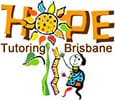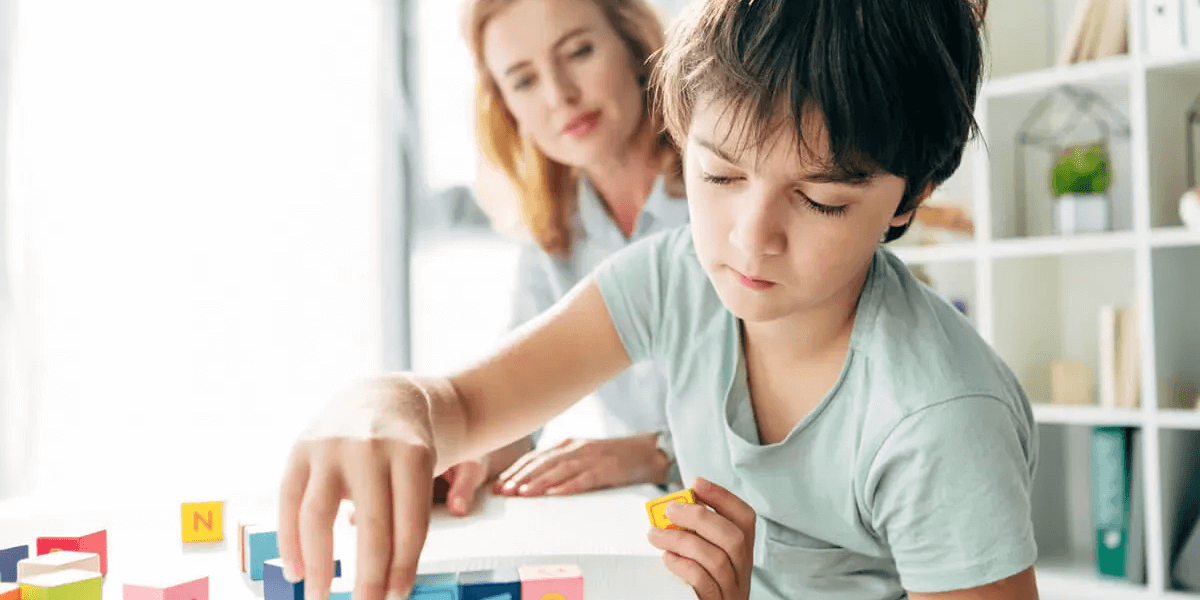by Brisbane Tutor Justin Clark
Whether your child is home-schooled or attends mainstream school, engaging with them through home learning activities and games can be a fun and rewarding experience for you both. Structured activities provide clear guidelines about what happens and when during a game, what to do at each stage, what the goal is, and how it ends. This is particularly helpful for autistic children as it makes activities more predictable and hence less stressful, making participation and enjoyment more manageable. Structured activities help children to develop skills such as turn-taking, following instructions, sharing, and interacting with others. These are important for success when playing with peers.
As adults, we often forget how complex the rules of games are for children, particularly for those with learning difficulties. Most games have a long list of rules, both explicit and implicit, as well as a set of social expectations for how participants should react during play, which can be stressful for autistic children. Playing games at home will help your child become familiar with the workings of the activity. This can aid them in progressing to engaging in the game with their peers. Many common kids’ games can be easily modified to make them more accessible for children with autism or other learning difficulties, which is dually beneficial, as it makes the activity less stressful for them while also adding an educational element.
What Types of Games and Activities are Best for Children with Autism?
Children with autism often thrive in structured environments where they can accurately predict what will happen next, which is why games that have a clearly defined objective and fixed endpoint are generally best. Every autistic child’s specific skills and needs are different. However, some general guidelines can be followed when adapting an activity to breed success.
How to Adapt Activities and Games for Children with Autism
- Children with autism appreciate predictability, so prepare your child for what will happen in the game and what they will experience during the activity in detail. Thorough preparation can make games, especially new ones, feel less daunting.
- Provide a clear set of instructions or rules and ensure your child understands fully before beginning the game. You can check understanding with questions like, “What happens when…?” or “How do I start my turn?” or “What’s the goal?”
- Provide an opportunity for your child to ask questions about the activity and express anything they are uncertain or anxious about. Ensure their expressions of concern are a positive experience by validating their feelings and suggesting strategies to help them feel more secure.
What are Some Home Learning Activities and Games to Support Cognitive and Motor Skills?
How to Adapt Hopscotch for Autistic Children
Hopscotch is an excellent game for developing physical coordination, cognitive skills and balance. Hopping on one foot to designated squares aids midline development, muscle strength and body control. When played in a group, hopscotch is also great for supporting social skills like turn-taking and encouraging peers. Add a marker to toss and pick up, and your child will also be working on hand-eye coordination and fine motor control.
\While hopscotch doesn’t have a complicated list of instructions or rules, it can be tricky to combine all the skills needed. This can be frustrating for some autistic children. Easy adaptations for hopscotch include:
- Keeping it simple by only using one skill at a time. Practice hopping across the court, or eliminate the hopping and practice throwing the bean bag or marker to a square, then walking over to collect it.
- Switching up the identifiers on the squares of the court. For example, if you’re working on learning numbers, use the traditional numbered hopscotch court. You could make each square a different colour, use letters of the alphabet or even pictures of animals, shapes or people’s faces. This encourages children to work on their recognition skills when asked to hop or throw the marker to the desired square.
Can Snakes and Ladders be Adapted for Kids with Autism?
Snakes and Ladders is another versatile game that allows for the practice of a range of skills, such as counting, turn-taking and understanding cause and effect. Game boards are often very busy, so they can be overwhelming for children with ASD.
To help them prepare for this activity and understand the sequence of the game, you can get your child to drive a toy car along the board, following the numbers and practising going up ladders and down snakes. Tracing the various paths with a finger can be good, too. Here’s how you can adapt Snakes and Ladders for autistic kids:
- Add arrow stickers to the board to help with direction. Add arrows pointing up the ladders and down the snakes to reinforce the understanding of where to move. For extra differentiation between the two, you can use arrows of different colours for up and down. If your child isn’t confident with numbers yet, you can also add arrows across the rows of numbers for a clear visual aid of where to move on each turn. This helpful tip applies to all board games that progress in a single direction, such as Monopoly, Cranium and Mousetrap.
- Provide a social story with visual cues for the steps players will take on each turn, and a script for how to respond to different events, with phrases like, “I hope I land on a ladder,” or “Oops, I got a snake.”
- If your child struggles to remember which is their game piece, try adding cues like a matching coloured wristband to remind them, or swapping pieces out for photos of the players.
- To practice more advanced numerical skills, use multiple dice, and get your child to add or multiply the numbers on each top face to give the number of spaces they will move.
How to Play Simon Says with Autistic Children
The well-known game Simon Says can be a double-edged sword for children with autism. On one hand, it has very clear roles, which is good for understanding what each person in the game will be doing. But on the other hand, the instructions given by the person playing ‘Simon’ can be unpredictable. This can be a source of stress. Additionally, the thought of ‘failing’ to do the action correctly in front of a peer group and ‘getting out’ can create anxiety.
Simon Says is a great game to play at home to practice following instructions, or for practising desired behaviours, like putting on shoes, sitting at the table, putting toys away, or saying goodbye. It’s easy to make it more accessible for children with ASD by providing the following adaptations:
- Taking away the ‘Simon Says’ rule (when ‘Simon’ doesn’t say “Simon says” before stating the instruction, and if a player does the action, they’re out) can reduce stress and make it easier for kids to focus on the instruction being given, breeding an environment of success.
- Reducing the number of instructions ‘Simon’ can give to a short list, and providing picture cues of each instruction for the child. If your child needs additional structure and predictability, ‘Simon’ can use the set list of instructions in the same order, so the child will always know what is coming next.
Is Memory a Good Game for Children with Autism?
As this game’s name implies, Memory is great for practising visual memory. Often, children with ASD are quite strong in this area. However, those who struggle more with spatial awareness and remembering the location of items in relation to others will find it more challenging.
Memory is really useful as it can be easily tailored to relate to any topic being learned, or to align with a subject of interest for your child. Memory cards are easy to DIY by printing two sets of numbers, letters or images onto cardboard and cutting them into cards. For extra durability, lamination offers greater protection.
Here’s how to adapt Memory for autistic children who find it challenging:
- Begin with the cards laid out on the surface face-up to eliminate the memory aspect, allowing the child to focus solely on finding and matching. Then, progress to beginning with the cards face down, but leaving them face up once they have been viewed to increase the chances of success in getting a match. Once your child is more familiar with the game, you can start turning the cards over again.
- Start small. Use a significantly reduced number of cards (between two and four pairs) to begin with, and gradually increase the number of cards being used as your child’s confidence and competency increase.
Contact Justin
Hope Tutoring led by Justin Clark is a team of specialist tutors who often use games for learning difficulties help. Contact us today if you are looking for tutoring in Brisbane or someone who can do remote tutoring.


